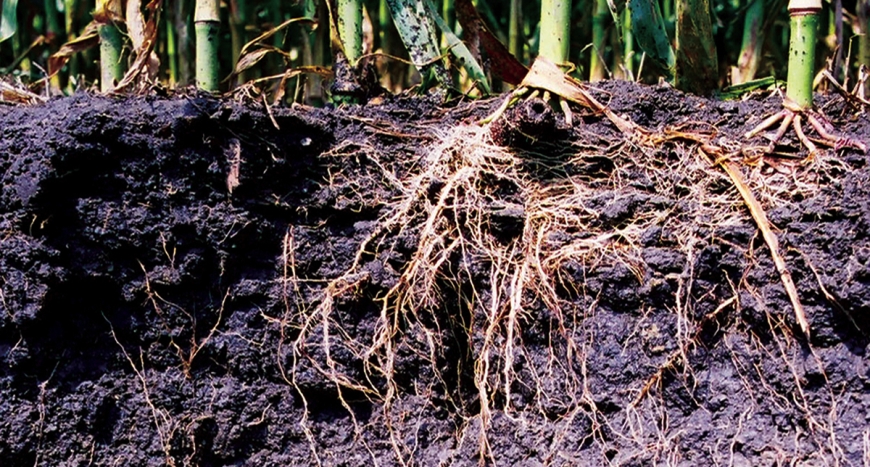From Pedestrian to Princess: Annual Ryegrass in Midwest Cornfields
Annual ryegrass has led a bit of a Cinderella life. Plain and pedestrian for a century or more, it was a go-to seed for jumpstarting green acreage quickly in city parks and ballfields, highway roadsides, golf course fairways and big estates around the world. Among its greatest assets over time: it’s easiness to germinate and affordability.
But then, in the mid 1990s, Oregon seed growers and the Ryegrass Commission gave Junior Upton an opportunity to see what the crop might do to slow the erosion on his thin, hilly acreage east of St. Louis. The old Cinderella seed did its job keeping soil in its place as spring rains tried to pry it loose. But the new Cinderella story, the thing nobody anticipated, was the crop’s deep rooting capability. In a couple of years on his no-till corn and beanfields, annual ryegrass roots were found at depths of four to five feet, having busted through the fragipan layers. The other ‘ah ha’ was that his corn production began to rise. Well, these three things helped add energy and excitement to a fledgling cover crop movement. It was the first of what has become a long list of benefits, courtesy of annual ryegrass as a cover crop.

Junior and Mike Plumer weren’t shy about the results on Upton’s farm, with his yield on marginal land overtaking that of his neighbor’s acreage, which had historically been superior. But as with any new thing, Upton and Plumer found it challenging to convince others to try annual ryegrass. Farmers are wary of new gimmicks. Generation after generation has come to rely on more power, deeper rippers, and better chemistry to keep field production high. They’d say, “Conventional tillage was good enough for my pop and grandpa, so it’s good enough for me, too!” Philosopher Arthur Schopenhauer observed three stages of truth: at first, most people ridicule it. Then as it gains traction, they vigorously oppose it. Finally, when it has become familiar and others are on board, they accept it and act like they’ve never doubted it in the first place.
Don Wirth said that, at each of those stages, you’ll find a different type of person. Those who see change as their friend and are always looking for a new angle he calls innovators. The next tier are the “early adopters”, who benefit from the innovators and put changes into effect quickly. The final group are those who, like Junior’s neighbors, wait to see how things turn out before getting their feet wet. There’s nothing wrong with any of the three groups, in fact it’s a natural thing. But it shows why it takes so many years to change habitual behavior in human beings.
Thankfully, we were able to find more than a dozen innovators willing to cooperate with our project in the late 1990s and early 2000s. What helped the project immensely were these three things:
- The Oregon Ryegrass Commission commitment to a long term educational and marketing effort, backed by dollars contributed by Oregon seed growers themselves
- Don Wirth, Nick Bowers, and a few others from the Oregon seed growing industry, continued to be of immense value, for their funding, their seed and their many voluntary trips to the Midwest to witness field trials, work with cooperating growers, go to trade shows and answer questions about annual ryegrass with people interested in cover crops.
- Hiring Mike Plumer and Dan Towery to network, work with cooperating growers, attend trade shows, become active on regional and national boards related to agriculture, and spending tons of time out in the field, adding quality control to what was one big-ass experiment.
In the next blog, we’ll talk about some of the new benefits discovered in those early years, as well as some of the interesting partnerships formed, including with environmental groups eager to try new ways to clean up polluted Midwest waterways.
